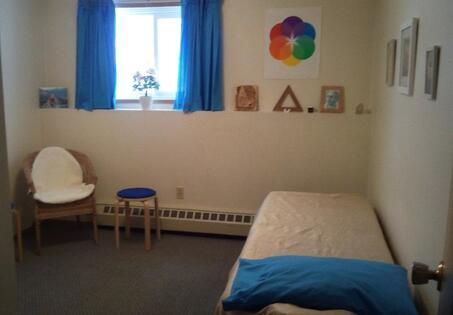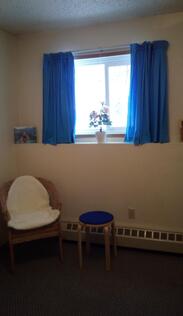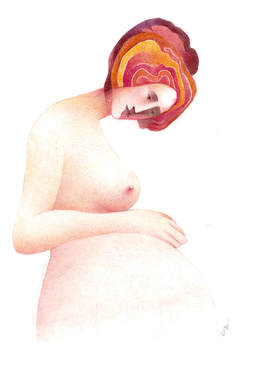Classes and workshops in a group
Breathexperience is taught in groups where participants practice and experiment with a variety of different exercises. Those exercises are specific forms in which students experience their allowed breath in relation to the awareness of their body. Based on this collective experience, students develop their own forms moved by their breath rhythms and breath cycles - through inhale, exhale and pause.
Exercises are taught either in a sitting or standing position and free movement develops out of breath.
The program also includes some exercises experiencing breath with a singing or speaking voice.
Breathexperience is taught in groups where participants practice and experiment with a variety of different exercises. Those exercises are specific forms in which students experience their allowed breath in relation to the awareness of their body. Based on this collective experience, students develop their own forms moved by their breath rhythms and breath cycles - through inhale, exhale and pause.
Exercises are taught either in a sitting or standing position and free movement develops out of breath.
The program also includes some exercises experiencing breath with a singing or speaking voice.
The cosmic exercise (as shown below) is one example of the program. This exercise works with the three breath spaces, and develops uprising, down flowing, and horizontal forces of the breath.
Individual sessions
Breath work can also be experienced in an individual session or Breath dialogue. The participant lies down in comfortable clothes on a table. Through physical touch the practitioner joins in dialog with the breath of the client. This dialogue supports the client in experiencing the allowed breath to spread through the body as a oneness. The result is physical and emotional wellbeing that can be experienced immediately.
Breath work can also be experienced in an individual session or Breath dialogue. The participant lies down in comfortable clothes on a table. Through physical touch the practitioner joins in dialog with the breath of the client. This dialogue supports the client in experiencing the allowed breath to spread through the body as a oneness. The result is physical and emotional wellbeing that can be experienced immediately.
Breath Work and consultations with pregnant women and couples
Before pregnancy and after giving birth it is important to address the inner strength and substance ("core") of the mother in order to invigorate it. This will establish a good relationship between mother and child. During pregnancy the mother gives up a part of her "core substance" to encourage the growing of the child; this results in a symbiotic bond between mother and child. As a Practitioner, I will respect and support this symbiosis by always addressing the oneness of the mother and the child. We call this "the oneness of the Body of Breath" (BoB). Working on the “inhale," creating space, and following the “exhale in” are very supportive for unfolding this inner process.
During the first three months of pregnancy, the egg should be allowed to nest in the uterus without exercises that are too stimulating. There should be no interruption of the nesting.
Upon reaching midterm, or approximately from month four on, the mother may begin to experience lower back pain; this pain can be attended to by breath work that helps to create space in the lower back, and up and down the spine.
Towards the end of the pregnancy, the mother and breath practitioner can work carefully with the down flowing powers of the breath. This will facilitate the process of the child coming down and out of the uterus.
During the whole pregnancy it is also important for the couple and their relationship that both partners sense and recognize their own breath rhythm. This will build a communicative, creative, and strong relationship.
Before pregnancy and after giving birth it is important to address the inner strength and substance ("core") of the mother in order to invigorate it. This will establish a good relationship between mother and child. During pregnancy the mother gives up a part of her "core substance" to encourage the growing of the child; this results in a symbiotic bond between mother and child. As a Practitioner, I will respect and support this symbiosis by always addressing the oneness of the mother and the child. We call this "the oneness of the Body of Breath" (BoB). Working on the “inhale," creating space, and following the “exhale in” are very supportive for unfolding this inner process.
During the first three months of pregnancy, the egg should be allowed to nest in the uterus without exercises that are too stimulating. There should be no interruption of the nesting.
Upon reaching midterm, or approximately from month four on, the mother may begin to experience lower back pain; this pain can be attended to by breath work that helps to create space in the lower back, and up and down the spine.
Towards the end of the pregnancy, the mother and breath practitioner can work carefully with the down flowing powers of the breath. This will facilitate the process of the child coming down and out of the uterus.
During the whole pregnancy it is also important for the couple and their relationship that both partners sense and recognize their own breath rhythm. This will build a communicative, creative, and strong relationship.
“For every human being, life begins with a breath. When a baby is born, the very first thing it must do in order to become a citizen of the earth is to breathe; it opens its little mouth and lets out a cry and all those who hear it rejoice because the baby is alive! Thanks to the first inhalation, the child’s lungs are filled with air and begin to do their work; life is set in motion. And many years later, when we hear that he has ’breathed his last,’ we understand this to mean that he has died. Yes, breath is the beginning and the end. Life begins and ends with a breath.”
O.M.Aïvanhov




